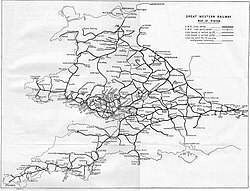The Railway Station
| The Railway Station | |
|---|---|
 | |
| Artist | William Powell Frith |
| Year | 1862 |
| Type | Oil on canvas |
| Dimensions | 54.1 cm × 114 cm (21.3 in × 45 in) |
| Location | National Maritime Museum, London |
The Railway Station is an 1862 genre painting by the British artist William Powell Frith.[1] It depicts a scene at the busy Paddington Station railway terminus of the Great Western in London. Frith had developed a reputation for producing crowd scenes of everyday life, including Ramsgate Sands (1854) and The Derby Day (1858). Frith himself was doubtful about the potential work noting "I don't think the station at Paddington could be called picturesque, nor can the clothes of the ordinary traveller be said to offer much attraction to the painter", but was persuaded by his art dealer Louis Flatow who offered him reportedly the largest commission fee ever offered to an artist.[2]
The panorama represents all social classes of Victorian society, using the still relatively new railway system. On the right, two detectives are arresting a man as attempts to board a train.[3]
Today the painting is held at Royal Holloway College, with a smaller version in the Royal Collection.[4]
References[edit]
- ^ Trotter p.63
- ^ Green p.38
- ^ Green p.38
- ^ "William Powell Frith (1819-1909) - The Railway Station". rct.uk. Retrieved 2023-04-29.
Bibliography[edit]
- Green, Oliver. London's Great Railway Stations. Frances Lincoln, 23 Nov 2021
- Green, Richard & Sellars, Jane. William Powell Frith: The People's Painter. Bloomsbury, 2019.
- Trotter, David. William Powell Frith: Painting the Victorian Age.

